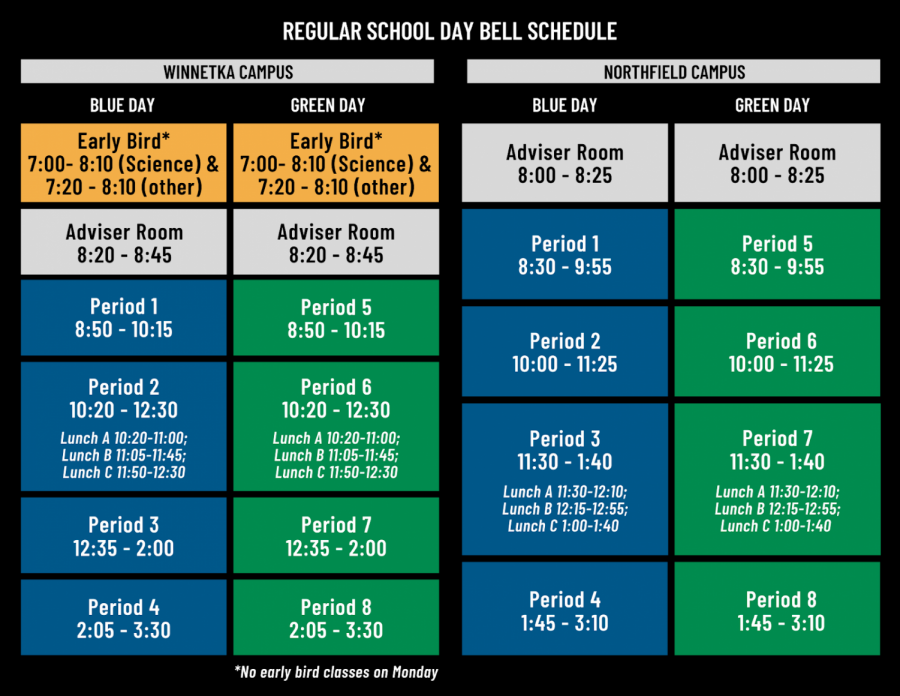Why the 85 minute schedule isn’t as bad as you think
The new block schedule benefits students in ways that the old schedule couldn’t
NT Website
The new schedule replaces the 70 minute period with 85 minutes, with some classes, like science, meeting in half blocks every other day
At first, all I heard about the new schedule was criticism. Many students, including me, felt that 85 minutes was too much for the average student’s attention span. And although we took surveys showing support for a block schedule, the extended length of time compared to last year’s schedule came as a surprise. But now after reconsideration, the longer block schedules have lots of advantages over past schedules that many students will come to like.
One of the most impactful changes this schedule brings is the amount of homework students have each night. With just four classes a day instead of the conventional nine, students have more time to study for their classes. Additionally, the time each student spends on homework each night might be decreased further by having time in class to complete their work.
The main misconception I hear is that students and teachers will not be able to focus for 85 minutes at a time. This interpretation doesn’t acknowledge that teachers have purposely shaped their curriculum for such a schedule and are ready to bring different types of learning strategies to the table. Having more time to work with the whole group, small groups, pairs, and individually will not only refresh students but allow the maximum number of students to succeed in different learning environments.
Teachers will also get to know their students more with the longer periods, and will be able to create a schedule of when to take breaks for their minds and bodies which would be tailored for each class. In fact, in my summer biology class, which met everyday for five hours, we would sometimes go on walks to the beach as a way to take breaks. As students, we should have faith in our teachers’ abilities to create a balanced schedule that will keep us engaged throughout the 85 minutes.
The longer chunks of time benefit classes like art, theatre, cooking, and kinetic wellness due to students and teachers not having to pause for the next day to continue longer activities or projects. This also applies to science classes with labs, though science classes are daily with alternating 45 minute and 85 minute periods.
Although the block schedule has been fairly new for most of us, many programs have been operating in a block schedule well before the pandemic. World Studies and American Studies, for example, operate in a block schedule alternating between English and social studies classes. One of the most successful block schedules is IGSS, which combines art, English, and social studies to give students more control over their education and the topics they pursue.
Despite the block schedule being put in place for remote learning, furthering the block schedule after COVID should be considered as well. The new schedule helps alleviate issues that students have been complaining about for years that frankly were not being addressed near enough. The long block schedule beats the classic schedule in aspects such as student extracurriculars, increased social interactions with peers and teachers, and a wide support of different cognitive learning styles for all students.
I have no idea how I survived freshman year. Now that I have had both experiences in a classic and block schedule, the block schedule suited my workflow best and reduced my overall stress from school. When considering all the extracurricular activities I partake in, a classic nine period schedule would never be able to support me and my passions. Students may not yet realize it, but this new schedule might be another silver lining of the pandemic.







































